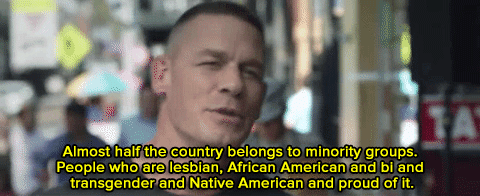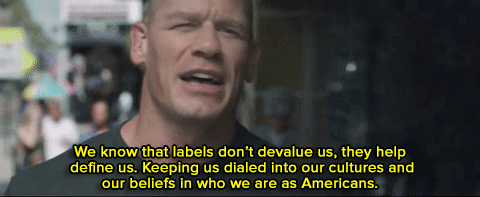How Churchill Engineered The Holocaust Of 3 Million Indians
How Churchill engineered the holocaust of 3 million Indians



As the resistance swelled, Churchill announced: “I hate Indians. They are a beastly people with a beastly religion.” This hatred killed. To give just one, major, example, in 1943 a famine broke out in Bengal, caused – as the Nobel Prize-winning economist Amartya Sen has proved – by the imperial policies of the British. Up to 3 million people starved to death while British officials begged Churchill to direct food supplies to the region. He bluntly refused. He raged that it was their own fault for “breeding like rabbits”. At other times, he said the plague was “merrily” culling the population. Skeletal, half-dead people were streaming into the cities and dying on the streets, but Churchill – to the astonishment of his staff – had only jeers for them. “If food is so scarce, why hasn’t Gandhi died yet?”
Source: The Independent, Time, IBT
More Posts from Er-zico and Others










Watch: John Cena continues, “So, let’s try this one more time. Close your eyes.”


(Image caption: Because babies born prematurely are still developing, they typically have smaller brains than full-term infants. Shown are depictions of the cortical-surface area of the brain at different points in gestation. Illustration by Eric Young)
Breast milk linked to significant early brain growth in preemies
Feeding premature babies mostly breast milk during the first month of life appears to spur more robust brain growth, compared with babies given little or no breast milk.
Studying preterm infants in the Neonatal Intensive Care Unit (NICU) at St. Louis Children’s Hospital, the researchers found that preemies whose daily diets were at least 50 percent breast milk had more brain tissue and cortical-surface area by their due dates than premature babies who consumed significantly less breast milk.
The researchers, at Washington University School of Medicine in St. Louis, presented their findings May 3 at the annual meeting of the Pediatric Academic Societies, in Baltimore.
“The brains of babies born before their due dates usually are not fully developed,” said senior investigator Cynthia Rogers, MD, an assistant professor of child psychiatry who treats patients at St. Louis Children’s Hospital. “But breast milk has been shown to be helpful in other areas of development, so we looked to see what effect it might have on the brain. With MRI scans, we found that babies fed more breast milk had larger brain volumes. This is important because several other studies have shown a correlation between brain volume and cognitive development.”
The study included 77 preterm infants. The researchers retrospectively looked to see how much breast milk those babies had received while being cared for in the NICU. Then, the researchers conducted brain scans on those infants at about the time each would have been born had the babies not arrived early. All of the babies were born at least 10 weeks early, with an average gestation of 26 weeks, or about 14 weeks premature. Because they are still developing, preemies typically have smaller brains than full-term infants.
First author Erin Reynolds, a research technician in Rogers’ laboratory, said in gauging the effects of breast milk on the babies’ brains, the researchers didn’t distinguish between milk that came from the babies’ own mothers and breast milk donated by other women. Rather, they focused on the influence of breast milk in general.
“As the amount of breast milk increased, so did a baby’s chances of having a larger cortical surface area,” Reynolds said. “The cortex is the part of the brain associated with cognition, so we assume that more cortex will help improve cognition as the babies grow and develop.”
Preterm birth is a leading cause of neurologic problems in children and has been linked to psychiatric disorders later in childhood. Rogers and her team plan to follow the babies in the study through their first several years of life to see how they grow, focusing on their motor, cognitive and social development. As the babies get older, the researchers believe they will be able to determine the effects of early exposure to breast milk on later developmental outcomes.
“We want to see whether this difference in brain size has an effect on any of those developmental milestones,” Rogers said. “Neonatologists already believe breast milk is the best nutrition for preterm infants. We wanted to see whether it was possible to detect the impact of breast milk on the brain this early in life and whether the benefits appeared quickly or developed over time.”
Rogers said further investigation is needed to determine specifically how breast milk affects the brain and what is present in the milk that seems to promote brain development. She explained that because all of the babies in the study were born early it isn’t clear whether breast milk would provide similar benefits for babies born at full term.



To those who celebrate it, Happy Independence Day! Enjoy the parabolic envelopes that form while those bright, sparkling, parabolic curves are etched into the sky tonight…



A team of scientists has developed “robot flies” about the size of a quarter that can perch on almost any surface.
The perching works using static electricity. Each drone carries a tiny copper electrode on its head. When the electrode is energized, it creates a static charge that sticks the robot to a surface. Turning off the electrode sends the little drone back into the air.
Perching is important because it makes the robots more energy efficient. Perching is up to a thousand times more energy-efficient than hovering in place, the researchers say.
Read more about roboflies here.

What is it Like to Visit Jupiter?
Jupiter is the largest planet in our solar system. For some perspective, if it were hollow, more than 1,300 Earths could fit inside of it! The giant planet contains two-thirds of all the planetary mass in the solar system and holds more than dozens of moons in its gravitational grip. But what about a visit to this giant planet?

Let’s be honest…Jupiter is not a nice place to visit. It’s a giant ball of gas and there’s nowhere to land. Any spacecraft – or person – passing through the colorful clouds gets crushed and melted. On Jupiter, the pressure is so strong it squishes gas into liquid. Its atmosphere can crush a metal spaceship like a paper cup.

Jupiter’s stripes and swirls are cold, windy clouds of ammonia and water. Jupiter’s Great Red Spot is a giant storm BIGGER THAN EARTH! This storm has lasted hundreds of years.

Since Jupiter’s atmosphere is made up of mostly hydrogen and helium, it’s poisonous. There’s also dangerous radiation, more than 1,000 times the lethal level for a human.
Scientists think that Jupiter’s core may be a thick, super hot soup…up to 50,000 degrees! Woah!
The Moons

Did you know that Jupiter has its own “mini solar system” of 50 moons? Scientists are most interested in the Galilean satellites – which are the four largest moons discovered by Galileo Galilei in 1610.
Today, Galileo would be astounded to know some of the facts about these moons. The moon Io has active volcanos. Ganymede has its own magnetic field while Europa has a frozen crust with liquid-water underneath making it a tempting place to explore for future missions.

When Juno arrives to Jupiter on July 4, it will bring with it a slew of instruments such as infrared imager/spectrometer and vector magnetometer among the half a dozen other scientific tools in its payload.
Juno will avoid Jupiter’s highest radiation regions by approaching over the north, dropping to an altitude below the planet’s radiation belts – which are analogous to Earth’s Van Allen belts, but far more deadly – and then exiting over the south. To protect sensitive spacecraft electronics, Juno will carry the first radiation shielded electronics vault, a critical feature for enabling sustained exploration in such a heavy radiation environment.
Follow our Juno mission on the web, Facebook, Twitter, YouTube and Tumblr.
Make sure to follow us on Tumblr for your regular dose of space: http://nasa.tumblr.com






WATCH: 12-Year-Olds Pinpoint Exactly What’s Wrong With How America Sees Race
Nine 12-year-old students who participated in a new video series titled “Being 12.” In the video above, the children – who come from a variety of ethnic backgrounds – share their perspective on growing up in today’s multicultural world and describe disturbing experiences dealing with race and culture.
See the full video their stories are eye-opening.
(GIF Source: WNYC)
Curving and bending a ball using the magnus effect is common in every sport. The effect can be reversed though - kick the ball the same way, and it will bend in the opposite direction!
Thanks to Nicole from @fuckyeahfluiddynamics for explaining the reverse magnus effect in this video!






“Schrödinger’s Smoke. We describe a new approach for the purely Eulerian simulation of incompressible fluids. In it, the fluid state is represented by a ℂ²-valued wave function evolving under the Schrödinger equation subject to incompressibility constraints.” YouTube.
-
 anageofseersvolumetwo2025 reblogged this · 5 months ago
anageofseersvolumetwo2025 reblogged this · 5 months ago -
 activatesleeperagentsofchange reblogged this · 6 months ago
activatesleeperagentsofchange reblogged this · 6 months ago -
 themazziah reblogged this · 11 months ago
themazziah reblogged this · 11 months ago -
 activateallsleeperagentsofchange reblogged this · 1 year ago
activateallsleeperagentsofchange reblogged this · 1 year ago -
 anageofseersvolumetwo2024 reblogged this · 1 year ago
anageofseersvolumetwo2024 reblogged this · 1 year ago -
 wecanstillsaveourworld reblogged this · 1 year ago
wecanstillsaveourworld reblogged this · 1 year ago -
 wearesleeperagentsofchange reblogged this · 1 year ago
wearesleeperagentsofchange reblogged this · 1 year ago -
 shrugsstuff reblogged this · 1 year ago
shrugsstuff reblogged this · 1 year ago -
 shrugsstuff liked this · 1 year ago
shrugsstuff liked this · 1 year ago -
 nipugtapuk reblogged this · 1 year ago
nipugtapuk reblogged this · 1 year ago -
 snekknack reblogged this · 1 year ago
snekknack reblogged this · 1 year ago -
 snekknack liked this · 1 year ago
snekknack liked this · 1 year ago -
 that-edgy-gal reblogged this · 1 year ago
that-edgy-gal reblogged this · 1 year ago -
 that-edgy-gal liked this · 1 year ago
that-edgy-gal liked this · 1 year ago -
 celepito reblogged this · 1 year ago
celepito reblogged this · 1 year ago -
 cripplepunk-sylveon reblogged this · 1 year ago
cripplepunk-sylveon reblogged this · 1 year ago -
 cxsmictxy liked this · 1 year ago
cxsmictxy liked this · 1 year ago -
 simontesla reblogged this · 1 year ago
simontesla reblogged this · 1 year ago -
 funnylongnosedog liked this · 1 year ago
funnylongnosedog liked this · 1 year ago -
 arkymouse reblogged this · 1 year ago
arkymouse reblogged this · 1 year ago -
 arkymouse liked this · 1 year ago
arkymouse liked this · 1 year ago -
 tiankulis reblogged this · 1 year ago
tiankulis reblogged this · 1 year ago -
 boobachu reblogged this · 1 year ago
boobachu reblogged this · 1 year ago -
 bermudaagentofchange reblogged this · 1 year ago
bermudaagentofchange reblogged this · 1 year ago -
 wandering1528 reblogged this · 1 year ago
wandering1528 reblogged this · 1 year ago -
 galateacoco liked this · 2 years ago
galateacoco liked this · 2 years ago -
 postingontheinternet reblogged this · 3 years ago
postingontheinternet reblogged this · 3 years ago -
 postingontheinternet liked this · 3 years ago
postingontheinternet liked this · 3 years ago -
 jen56larknight reblogged this · 4 years ago
jen56larknight reblogged this · 4 years ago -
 boymommalivingoncoffee liked this · 4 years ago
boymommalivingoncoffee liked this · 4 years ago -
 superwholockian93 liked this · 4 years ago
superwholockian93 liked this · 4 years ago -
 hidingincorners reblogged this · 4 years ago
hidingincorners reblogged this · 4 years ago -
 kegsonkegsonkegs reblogged this · 4 years ago
kegsonkegsonkegs reblogged this · 4 years ago -
 pyrozyme liked this · 4 years ago
pyrozyme liked this · 4 years ago -
 halfofagayallofaqueer liked this · 4 years ago
halfofagayallofaqueer liked this · 4 years ago -
 butsoonwellbefound liked this · 4 years ago
butsoonwellbefound liked this · 4 years ago -
 systemcrasher liked this · 4 years ago
systemcrasher liked this · 4 years ago
Dear Readers,Welcome to my personal blog. I'm Sabyasachi Naik (Zico,24).An Agnostic,deeply NON religious(atheist), and Secular Progressive Civil Engineer . I'm brown and proud to be an Indian tribe. “I want to say a word to the Brahmins: In the name of God, religion, sastras you have duped us. We were the ruling people. Stop this life of cheating us from this year. Give room for rationalism and humanism.” ― Periyar E.V. Ramasamy
198 posts